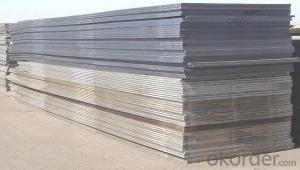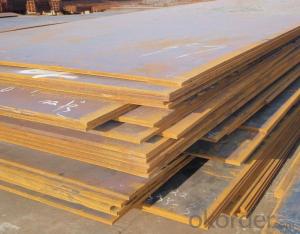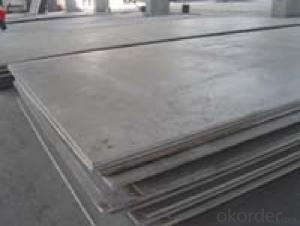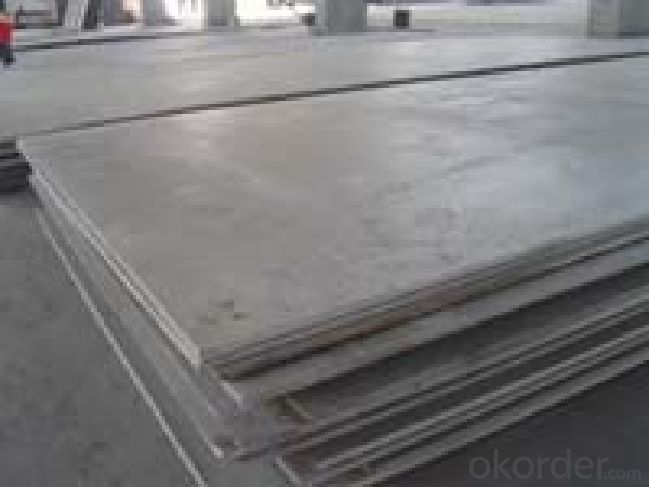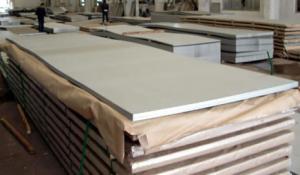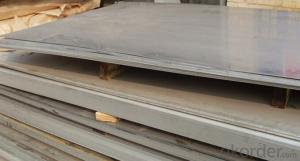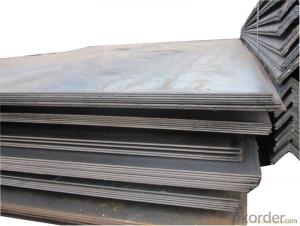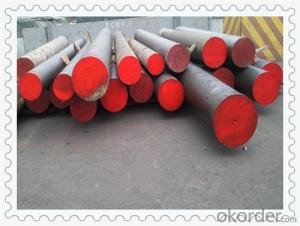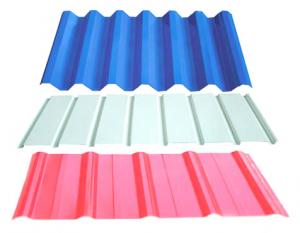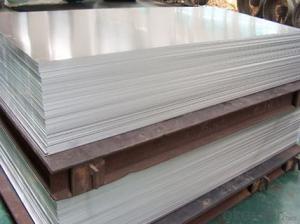Carbon Structural Steel plate
- Loading Port:
- China Main Port
- Payment Terms:
- TT OR LC
- Min Order Qty:
- -
- Supply Capability:
- -
OKorder Service Pledge
OKorder Financial Service
You Might Also Like
Introduction
Ordinary carbon structural steel and ordinary carbon steel. The carboncontent of less than 0.25% 0.06-0.22%, the most commonly used. Belongs to the low carbon steel, in each metal steel grades, minimum yield point thickness is less than 16mm. Compared with high-quality carbon structural steel, carbon content, performance and phosphorus, sulfur and other residual element content range. Provide security conditions in the China and some countries,ordinary carbon steel is divided into three categories: Steel (Xing Gang), only to ensure that the mechanical properties, does not guarantee the chemical composition, type B steel (B steel), only to ensure that the chemical composition, does not guarantee the special mechanical properties; steel(steel). Not only guarantee the chemical composition and mechanical properties, guarantee. Manufacturing structural components often used in special steel is very important..
Component is mainly used for the production of carbon structure steel structure engineering. It is commonly used to supply conditions, high sulfur,phosphorus content in steel, allows up to 0.050% and 0.045% respectively.Steel accounted for a larger proportion, total output in this steel.
3 application of this kind of steel from oxygen converter, open hearth furnaceor electric furnacesmelting, hot rolled steel, steel strip, the general part and bar. Plate usually volume (including control rolling) or normalizing treatment delivery. The chemical composition of the steel, mechanical properties, andbendingperformance shall comply with the relevant provisions.
In the Chinese national standard GB700-88 steel according to yield values are divided into 5 grades, and by mass is divided into 4 level. With the letter Qsymbol level, yield, yield value, quality rating symbol, consisting of 4 parts of the deoxidation method according to the order of.
The scope of application of this kind of steel is very extensive, mainly used for welding, riveting or steel structural bolts, minority is producing all kinds of machinery parts. Q195, and low strength of Q215 steel, the production of low carbon steel wire. Stainless steel wire mesh, the roof plate, welded steel pipe,anchor bolts and rivets etc.. Q235 steel of moderate intensity, and has good plasticity and toughness, easy forming and welding. This steel usually used for reinforcing steel structure, also used as a rivet, a railroad spike and variousmechanical parts, such as bolts, connecting rod, connecting rod. 255, Q275 high strength steel used in agricultural machinery production, can also be used as reinforcement of railway fishplate.
According to the special requirements for steel performance in some industries, for ordinary carbon structural steel composition adjustment and a series of professional steel after forming, such as cold heading steel, bridge steel, pressure vessel steel, steel, steel for boiler. In addition to the chemical composition of the strict control of steel used, so that the performance of the conventional, but also provides some special inspection of the project, such as low temperature impact toughness, aging sensitivity, gas in steel, inclusions and fracture etc..
Overview of Q235A features and scope of applications: Q235A toughness and the plasticity is good, have certain elongation, has good welding properties and hot workability. Q235A is generally used in hot rolling state, with steel, the rolling steel, steel plate, steel pipe can be used for welded structures, bridges and generally not important machine parts manufacturing all kinds of, such as bolts, rivets, rings and connecting rod, etc..
Said method: the symbolic quality rating symbol + deoxidation method of Q+ digital + composition. Its steel dubbed "Q", representing the yield point of steel, behind the figures to show that the yield point value units are MPa Q235 says such yield point (s) of carbon structural steel, 235 MPa. The necessary grades can be followed Mark said quality grade and deoxidizing method symbol. Quality level symbols are for A, B, C, D. Deoxidation method symbol: F said rimming steel;
B said semi killed steel: Z said calm steel; TZ said special calm steel, steel standard symbols not calm, namely Z and TZ are not standard. For example, Q235-AF said a rimmed steel. Carbon steel specially uses, such as for bridge steel.
- Q: What are the different sheet metal rolling techniques for steel sheets?
- There are several sheet metal rolling techniques that are commonly used for steel sheets. These techniques include hot rolling, cold rolling, and roll forming. Hot rolling is a process in which steel sheets are heated above their recrystallization temperature and then passed through a series of rollers to reduce their thickness. This technique is commonly used to produce steel sheets with a consistent and uniform thickness. The hot rolling process also improves the mechanical properties of the steel, making it stronger and more ductile. Cold rolling, on the other hand, is a technique in which steel sheets are passed through rollers at room temperature. This process is used to produce thinner and smoother steel sheets with a higher degree of dimensional accuracy. Cold-rolled steel sheets are often used in applications that require a high-quality surface finish, such as automotive body panels and appliances. Roll forming is a continuous bending process in which a long strip of steel is passed through a series of rollers to gradually shape it into a desired profile. This technique is commonly used to produce steel sheets with complex shapes and profiles, such as corrugated roofing sheets or C-channel beams. Roll forming offers excellent precision and repeatability, making it a popular choice for producing large quantities of steel sheets with consistent dimensions. Overall, the choice of sheet metal rolling technique depends on the specific requirements of the application. Hot rolling is ideal for producing steel sheets with a uniform thickness and improved mechanical properties. Cold rolling is preferred for applications that require a high-quality surface finish and dimensional accuracy. Roll forming is suitable for creating steel sheets with complex shapes and profiles.
- Q: What are the different sizes of steel sheets available?
- The different sizes of steel sheets available can vary depending on the specific manufacturer and supplier. Common sizes include 4x8 feet, 4x10 feet, and 5x10 feet, but there are also custom sizes available to meet specific project requirements.
- Q: Do the steel sheets have any specific certifications?
- Yes, the steel sheets have specific certifications to ensure their quality and compliance with industry standards. These certifications are typically issued by recognized organizations such as the International Organization for Standardization (ISO) or specific regulatory bodies depending on the country or region. The most common certifications for steel sheets include ISO 9001 for quality management systems, ISO 14001 for environmental management systems, and ISO 45001 for occupational health and safety management systems. Additionally, there may be specific certifications related to the steel industry, such as the American Society for Testing and Materials (ASTM) standards or the European Committee for Standardization (EN) certifications. These certifications guarantee that the steel sheets meet specific criteria for various attributes, including material composition, mechanical properties, and manufacturing processes.
- Q: Are steel sheets suitable for railway infrastructure?
- Yes, steel sheets are suitable for railway infrastructure due to their high strength, durability, and resistance to wear and tear. Steel sheets are often used for railway track components such as rails, sleepers, and bridges, as they can withstand heavy loads and provide stability to the railway system. Additionally, steel sheets can be easily fabricated and maintained, making them an ideal choice for railway construction projects.
- Q: How do steel sheets perform in terms of thermal conductivity?
- Steel sheets have a relatively high thermal conductivity, meaning they efficiently transfer heat.
- Q: Can steel sheets be used for magnetic shielding?
- Yes, steel sheets can be used for magnetic shielding. Steel is a ferromagnetic material, which means it can effectively redirect and absorb magnetic fields. By using steel sheets, it is possible to create a barrier that can block or minimize the penetration of magnetic fields, providing effective magnetic shielding.
- Q: What are the different surface textures for galvanized steel sheets?
- There are several different surface textures for galvanized steel sheets, including smooth, spangled, matte, and diamond.
- Q: The difference between steel edge sealing strip and steel plate putty water stop belt
- The good bonding between galvanized steel sheet and concrete makes the waterproof performance better. The utility model relates to a steel edge rubber water stop strip, which is characterized in that a water stopping product is adopted, which adopts a non equal thickness structure, a strong strength area and a waterproof zone, and makes the parts of the utility model be uniform and reasonable in force. The utility model relates to a steel edge rubber water stopping strip, which is additionally provided with an installation hole and is connected with the steel bar. The utility model has the advantages of firm fixation, easy displacement, and uniform and reasonable force for each part. When the utility model is in construction, the clamping surface of the clamping plate of the utility model is large and is not easy to be dislocated; the steel plate is additionally provided with an installation hole and is connected with the steel bar; the utility model has firm fixation and is not easy to displace. Good adhesion between galvanized steel sheet and concrete, and steel rubber stop makes waterproof better. A waterproof products produced by our factory in the buried steel edged waterstop is combined to galvanized steel and natural rubber raw material consisting of a rubber body material, it adopts the aging of natural rubber and excellent antioxidant performance, with strong self adhesive; high temperature in summer has no flow, low temperature in winter not the crisp; and has excellent water resistance, acid and alkali resistance and aging resistance; long service life, the product itself is non-toxic, the characteristics of a good environment.
- Q: Can steel sheets be used in HVAC applications?
- Yes, steel sheets can be used in HVAC applications. They are commonly used for ductwork, air handling units, and other components in HVAC systems due to their strength, durability, and ability to withstand high temperatures.
- Q: What is the average lead time for ordering steel sheets?
- The average lead time for ordering steel sheets varies depending on the supplier and the specific circumstances, but it typically ranges from 1 to 4 weeks.
Send your message to us
Carbon Structural Steel plate
- Loading Port:
- China Main Port
- Payment Terms:
- TT OR LC
- Min Order Qty:
- -
- Supply Capability:
- -
OKorder Service Pledge
OKorder Financial Service
Similar products
Hot products
Hot Searches
Related keywords
